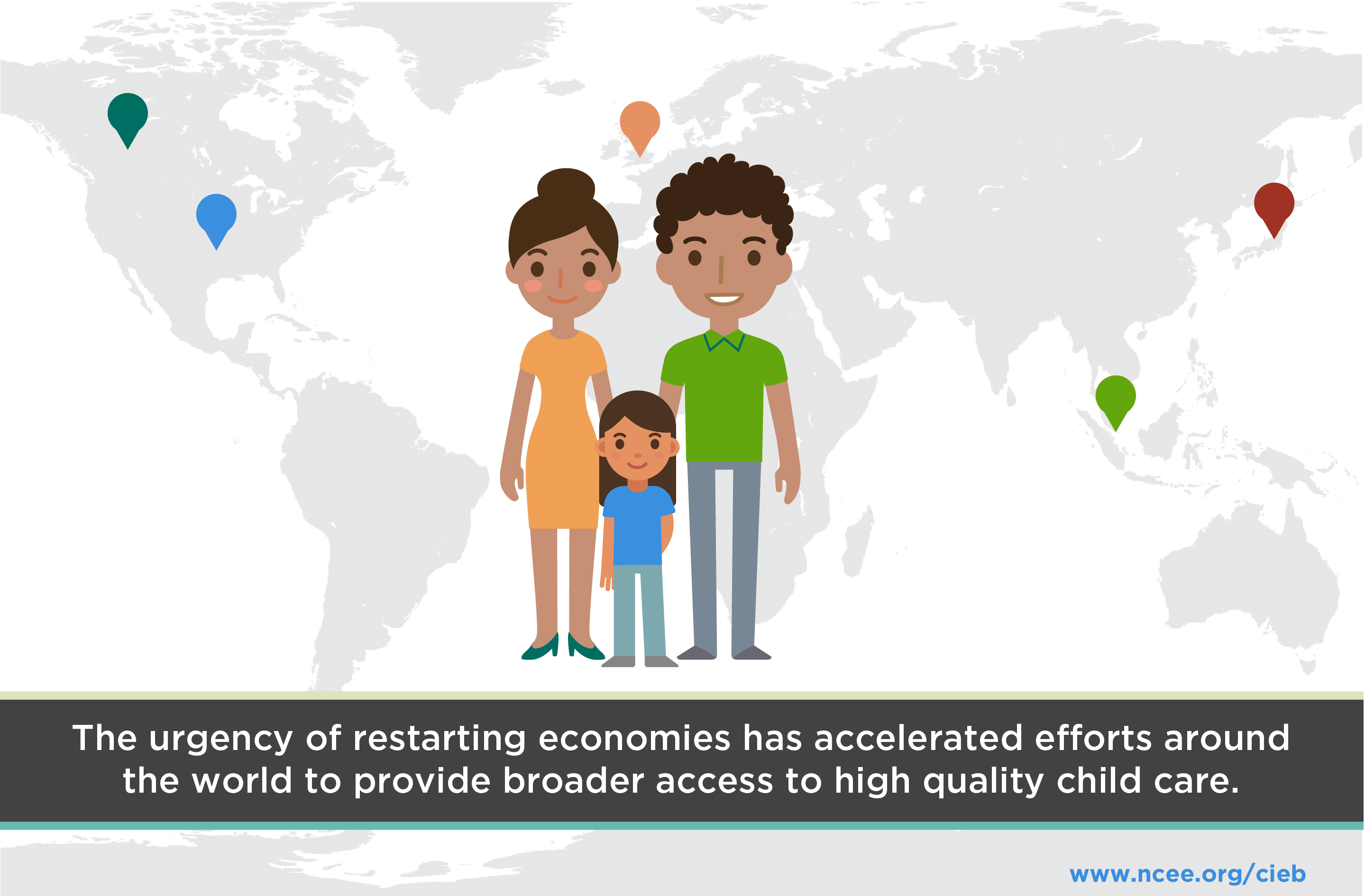
By Jackie Kraemer
The pandemic has highlighted the importance of affordable child care for working parents across the globe, as parents struggle to balance the demands of child care while working from home or as schools were shuttered. Here in the U.S., even before the pandemic, families often struggled to pay for child care and now many child care providers have closed for good, creating a shortage of high-quality options. The urgency of restarting economies has accelerated efforts already underway in many jurisdictions to move towards systems that ensure universal access to high quality child care.
Just last week, Canada’s Finance Minister announced the creation of a long-promised national child care program, with an initial national investment of CAN$30 billion over five years. Provinces will use these funds to supplement their own programs, many of which have been dramatically expanded in recent years. This includes Quebec, which has already promised universal access to public child care. Singapore, which has been steadily expanding its early childhood care and education programs for almost a decade, recently announced a 30 percent increase in the number of child care centers participating in its Partner Operator Scheme, which offers subsidies to centers that meet its quality standards and agree to cap fees at agreed-upon set levels. Japan, which announced a goal of universal provision of child care in 2017, announced an expansion of another 140,000 spaces at the end of 2020, and by spring of 2021 had reduced waiting lists for child care in half over the previous three years. And the UK is expanding free child care as of August 2021 for all 3 and 4-year-olds and 2-year-olds from low-income families to 30 hours per week.
The U.S. too has just committed additional resources for child care as part of the American Families Plan which will allow low- and middle-income families to pay for child care on a sliding scale so that they do not spend more than seven percent of their income on child care and enact permanent child care tax credits for low-income working families. Equally important is improving quality. The American Families Plan also includes provisions for strengthening the capacity of the child care workforce. In addition, the U.S. should not lose sight of the opportunity to improve other aspects of the child care system, including providing access to support services for participating children and their families and developing coordinated data systems that can drive ongoing improvement. For more on how high-performing systems are addressing these challenges, see NCEE’s Early Advantage study.




